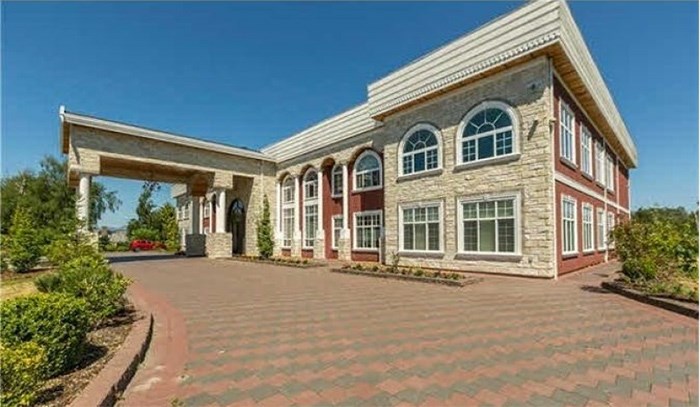 Fewer and smaller mansions are built on protected farmland six months after the city adopted a new bylaw ushering in new development restrictions in May. Photo by REW.ca
Fewer and smaller mansions are built on protected farmland six months after the city adopted a new bylaw ushering in new development restrictions in May. Photo by REW.ca
There are fewer, and smaller, mansions being built on protected farmland six months after a new bylaw ushered in new development restrictions, according to a report by City of Richmond staff.
On Tuesday, city councillors had different reactions to the review after hearing from landowners and small-scale farmers, who also had differing views on house sizes on the Agricultural Land Reserve (ALR).
The majority on the council committee agreed more data and public consultation are needed before a formal review is taken.
Staff were also asked by the committee to examine other options such as limiting the maximum house size to either 6,500, 7,500 or 8,500 sq.ft. and restricting the maximum house footprint to 5,200 sq. ft.
“Is it (the bylaw) considered successful? I don’t think so. There are still big houses and we should certainly look at them,” said Coun. Harold Steves.
Coun. Alexa Loo suggested the issue be revisited in another 18 months, and Coun. Bill McNulty also called for an extension to gather more information.
The new bylaw established a 10,763-square-foot limit on house sizes and limited the amount of land used for all residential upgrades (the ‘home plate’), in a bid to address growing concerns that mega mansions on ALR land are driving up land prices and making it unsustainable for those who want to actually farm.
The report shows that since early April, 11 building permit applications for residential construction on farmland were received. This is a drop from 45 during the first three months of 2017 (albeit this period marked a flood of applications due to the impending bylaw).
Since April, the average size of homes is 8,192 sq. ft., which is lower than the 10,408 sq. ft. average between 2010 and 2016.
But even with the 21 per cent drop, questions by councillors remained regarding the footprint and size of houses.
As well, the cost of farmland in general, is still viewed as too high for many who want to farm, which has lead to the suggestion of farmers leasing land. This has been proposed at both the civic and provincial levels.
“The more land leased, the more will be farmed,” said Mayor Malcolm Brodie.
But the question of leasing sparked a heated debate at the meeting between farmers, farm advocates, developers and land owners.
Kush Panatch, an ALR landowner and developer, said many owners want to lease out their land to farmers but can’t find anyone.
“I put up ads on a website to lease a piece of land for $250 per acre and didn’t receive a single request in six months,” said Panatch.
He argued there are not enough people interested in farming in Richmond and further restricting house size would not change that.
However, two farmers who are farming full-time on leased land in Richmond said many young farmers want to do farming here but leasing land in the municipality is very difficult.
“We knocked at people’s doors and got rejected most of the time. And we often encountered a language barrier,” said one farmer.
“Farming is profitable..but the fact that we have to renew the leases every year puts us farmers in a very vulnerable situation.”
She added, that because their businesses depends heavily on a good relationship with the landowners, many farmers are afraid to speak up on these issues.


